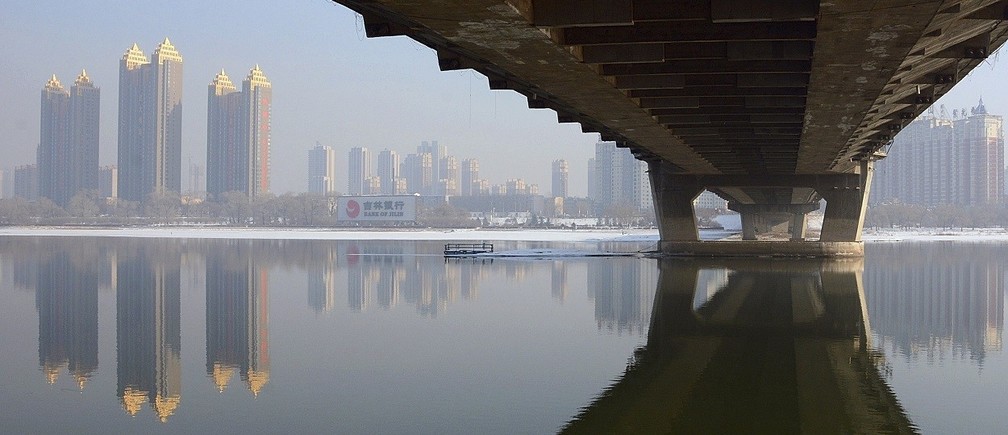As the World Economic Forum holds its tenth Annual Meeting of the New Champions in China, here are 10 ways in which the Chinese economy has chan
As the World Economic Forum holds its tenth Annual Meeting of the New Champions in China, here are 10 ways in which the Chinese economy has changed over the last ten years.
1. Growth has almost halved. In 2006, many analysts worried about the sustainability of China’s vertiginously high GDP growth, then over 12%. It had to slow sooner or later – but would there be a carefully-managed “soft landing”, or would a “hard landing” derail the global economy?
As it happened, that question was the wrong way round: two years and a US-spawned financial crisis later, the worry was whether the plunging global economy would derail China.

China’s 10-year growth chart shows a dip, a rapid rebound, and then a gradual downward drift towards current rates just below the government’s official target of around 7%.
2. Wealth has more than doubled. Though growth has slowed, compound effects mean it quickly adds up. The average Chinese person is more than twice as well off now as they were in 2006.
That’s according to the World Bank’s measure of national income per person, adjusted for purchasing power parity – a metric that seeks to allow meaningful comparisons across countries and time periods by looking at what dollar amounts can actually buy.
3. Inequality is shrinking… or is it? According to official statistics the Gini coefficient – a measure of income inequality – declined slightly over the last decade, from 0.487 in 2006 to 0.462 last year.
However, not everyone believes that these figures paint an accurate picture. Other studies suggest that inequality, in reality, is both significantly higher and getting worse.
4. The economy is slowly rebalancing. Most analyses of China’s economy in 2006 pointed to the need to rebalance from industry to services. That trajectory has duly been followed, with 2012 marking the crossover point at which services accounted for more of GDP than industry.
In 2006, industry’s contribution to GDP was about 13% higher than that of services. In the latest breakdown, from two years ago, services contributed about 13% more than industry.
5. Reliance on exports is reducing. Likewise, a decade ago many analysts expected China to become gradually less reliant on its export-led model of growth – and that path has been taken. In 2006, China’s exports amounted to 35% of its GDP; by 2014, that had fallen to 23%.
Imports, meanwhile, dropped from 29% of GDP to 19% in the same period, indicating that China has become significantly more self-sufficient.

6. Growth is greening… finally. Ten years ago, China was emitting under five tonnes of carbon dioxide per person. By 2013, that had grown to over seven tonnes – more than the European Union. That’s unsurprising, considering that in the same period the country almost doubled how much electricity it used per person.
Nonetheless, the latest data suggest that China is reducing its greenhouse gas emissions, and ahead of schedule to meet its own 2030 targets.
7. Health and education are improving. The percentage of children dying before their fifth birthday halved from 2.19 in 2006 to 1.07 in 2015. In the same period, the percentage of Chinese who still lack access to improved sanitation dropped from 34% to 24%.
In 2006, only 68% of secondary-aged children enrolled in secondary school. Within seven years, that had leapt to 96%. The percentage enrolling in tertiary education jumped from 20% to 30% in the same period.
8. Connectivity has exploded. Ten years ago, only one in 10 of China’s population was online, and only around a third had a mobile phone. Now, nearly everyone has a mobile, and more than half use the internet – mostly on their phones.

9. But productivity is declining. In 2006, China’s growth was being driven by advances in total factor productivity – essentially, how efficiently an economy converts inputs into outputs. However, with the onset of the crisis, that was about to change.
While productivity is difficult to measure with confidence, according to one interpretation it accounted for almost half of China’s growth between 2001 and 2007 period – but it has since slowed to almost zero, or even begun to decline.
In practical terms, that means China is growing primarily because it is still accumulating capital, not because it is getting any better at using it.
10. And debt is a worry. In 2006, China’s level of debt to GDP was 170%, and holding relatively steady – as it continued to do for another two years, until the crisis kicked in.

Since then, China’s debt has exploded to 282% of GDP – in dollar terms, approximately quadrupling. Around half of the debt is related to the real estate sector, and almost half of new lending is being carried out by the unregulated shadow banking sector. To what extent this matters, and why, remains an open question.
fonte: weforum.org

